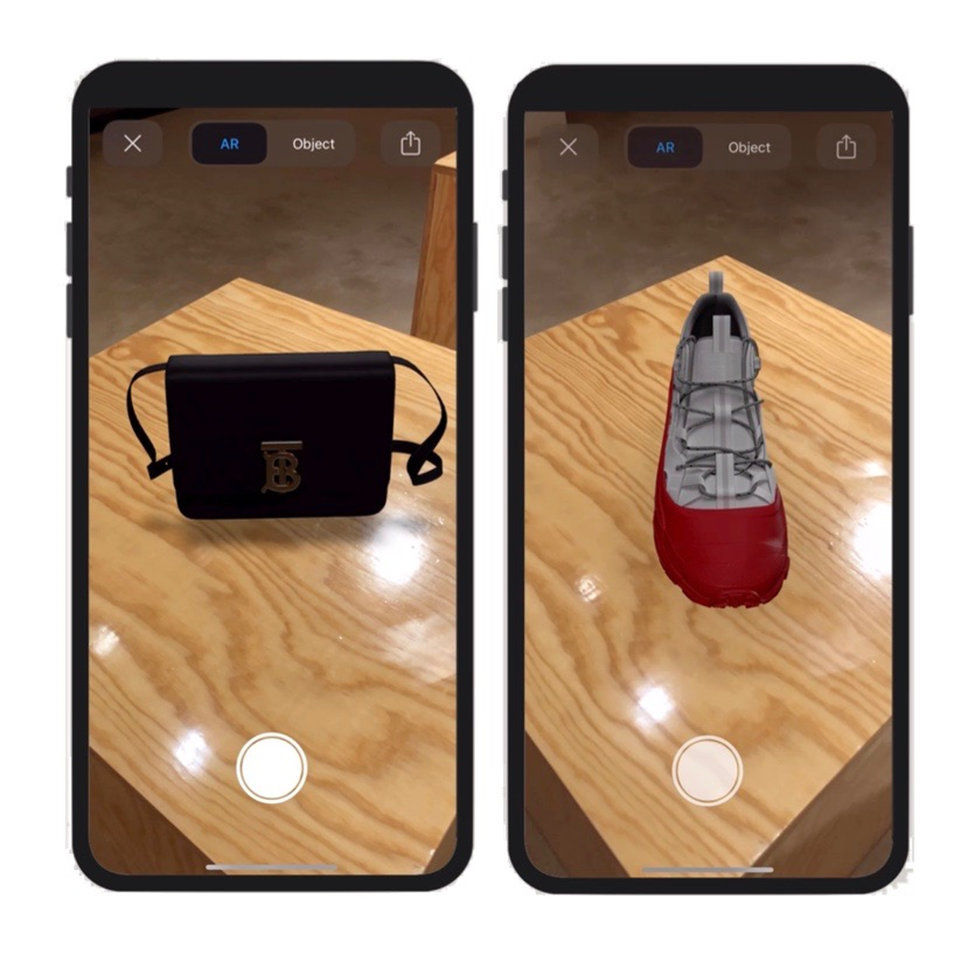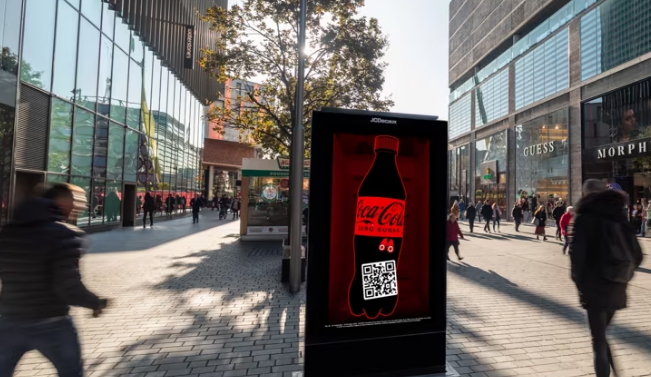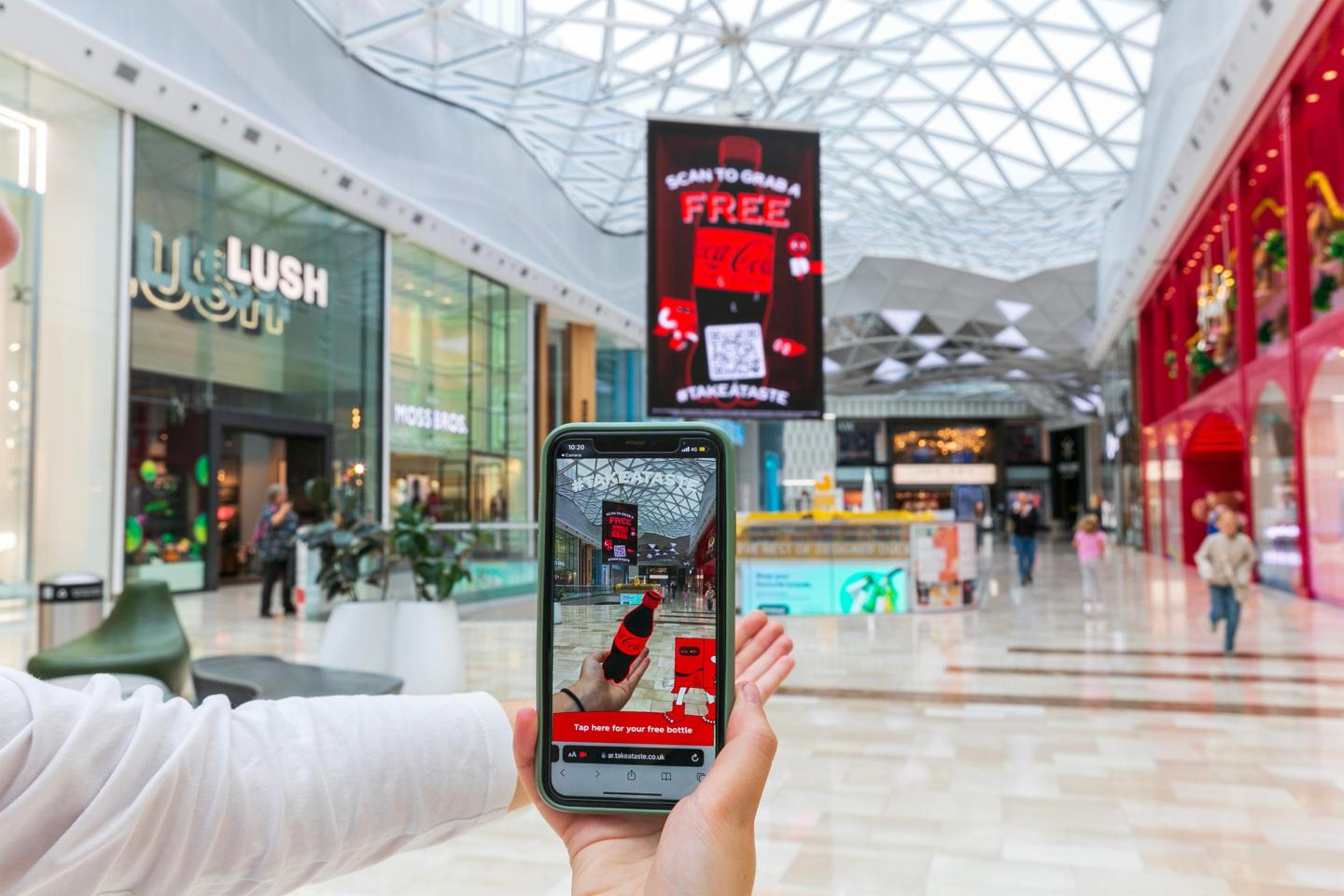What if your friend needs the perfect shade of lipstick while buying on an eCommerce platform?
Before the introduction of Augmented Reality(AR), your friend may have to purchase from an offline store by first testing the shade.
With advanced AR technologies and innovations, you can now get a virtual shade catalog to test at your will.
This is not the only AR use case; it now sees adoption across domains for multiple uses.
From virtual surgery assistance to education and retail sales, AR is now transforming the experience of products or services across business domains.
But before you think of investing in AR, here are some aspects to consider,
- AR development needs expertise.
- Integration into existing apps can be a problem.
- It needs infrastructure to support interactive features.
So, is AR worth your investment, support, and time?
Though there are challenges to AR app development, its benefits are beyond your expectations.
This article aims to help you understand AR’s benefits, use cases, what market leaders think, and market demand.

What is Augmented Reality?
Augmented Reality (AR) is an interactive technology that combines computer-generated 3D content with natural-world environments.
Through a hardware device, AR overlays digital information onto the user’s view of a real-world environment.
Using AR technology, you can add a layer of the digital environment to your surroundings. For example, Google Maps offers live directions to a location through arrows leveraging AR technology.
Similarly, there are many other use cases. Another example is eCommerce platforms like Amazon, which offer AR features to tell you how specific products will look and feel within your space.
Augmented Reality: The Stats
- Market for AR implementations is expected to grow at an annual rate of 8.97% (CAGR 2024-2029), resulting in a projected market volume of $62.0 billion by 2029. (Statista)
- The largest market segment within the AR market is AR Software, expected to reach a market volume of $13.0 billion in 2024. (Statista)
- The number of AR users is expected to reach 3,728.0 million by 2029, with a user penetration rate projected to be 52.8% in 2024 and an average revenue per user (ARPU) expected to be $11.91.(Statista)
- 2 in 5 consumers are likely to pay more for the product initially available for testing on AR (ThinkMobile)
- Gartner predicts the revenue for AR/VR headsets to reach $370 billion by 2034. (Gartner)
Augmented Reality: it’s like real life, but better.
When you think of AR, the first example that comes to mind is a Snapchat filter or a game leveraging such 3D environments.
However, AR goes beyond the usual perception of virtual environments.
For example, businesses can leverage approaches like “Marker-based AR,” where the content is tied to specific forms of a visual market.
Building an AR app using the marker-based approach offers a more immersive experience.
The app captures footage of real-world elements using a device camera and analyzes the image or pattern to display the information on the screen.
The object recognized with the market-based approach is then replaced with a 3D version.
This allows users to view an object in the AR environment from multiple angles. Similarly, several different methods of AR development provide users with real-life experiences.
However, it requires considerable investment, including app development. You must first understand why you chose AR for your business.
Why augmented reality (AR)?
AR transforms large volumes of data and analytics into animations at its core. These animations or images overlay original objects in the video.
This brings to life the abstract idea of an object, ensuring customers get an immersive visual experience.

Take, for example, Burberry’s AR campaign in collaboration with Google. Through this collaboration, Burberry leveraged the Google search tool to provide customers with AR experiences.
Customers can experience an AR version of the product on the scale when searching for Burberry items on the Goole search.
Burberry’s AR experience is just one use case, but there are endless possibilities for businesses.
This is why AR technology is witnessing massive adoption among enterprises. However, better product visualization is not the only difference that AR offers.
What are the key benefits of Augmented Reality?
The benefits of AR extend to advanced functions that not only improve user experience but also help increase conversions.
A key aspect of business activity that AR helps improve is customer engagement.
1. Improved Engagement With AR
One of the significant benefits of Augmented reality is immersive customer engagement through lifelike experiences.
For example, IKEA leverages the “IKEA Place” app to allow customers to place furniture they like virtually in their homes.
This allows customers to visualize how furniture looks and feels in their homes. It elevates the customer experience and helps users personalize the entire purchasing process.
Similarly, businesses can leverage AR to personalize experiences, improving their perception of the products.
While it offers a personalized customer experience, the benefits of AR go beyond personalization and offer a more competitive edge.
2. Competitive differentiation
AR enhances the experience of a product or service, giving your business a competitive edge. Brands have long used conventional marketing approaches for their products.
However, AR has changed the game for brands now. Significant brands are leveraging massive campaigns integrating AR-based technology.
However, if you can get creative with AR campaigns, your brand can gain a competitive advantage. Take Coca-Cola’s #TakeATasteNow campaign as an example.
While the soft drinks market is saturated, Coca-Cola is a giant player. Yet, it repeatedly leverages innovative campaigns to create competitive differentiation through unique experiences.

Coca-Cola’s interactive marketing campaign used a large digital out-of-home (DOOH) paired with AR. This unique approach offered customers the exciting experience of controlling screens in real-time.

The campaign was installed at over 13 locations across the UK, encouraging users to scan the QR code on their phones.
Once scanned, users were delighted to find a digital bottle on their smartphone, allowing them to change graphics live on the large display in the middle of the busy streets of London, Manchester, and other cities.
Similarly, you can leverage AR campaigns to provide a unique brand experience and differentiate your business.
However, the type of customer experience you can offer will depend on your products and services.
3. Targeted learning
The learning and development of employees attract higher costs each year. A Statista report shows that organizations spend more than $1200 annually on training each employee.
Spending such a massive budget on learning and development employees without specifics is like shooting at random targets in the dark.
The best practice, however, will be to identify critical areas of improvement and provide a more specific training program.
This includes leveraging technologies like AR. One benefit of AR for employee learning and development is a targeted approach.
You can create interactive training modules that engage employees and provide targeted learning.
Another critical benefit of augmented reality is the reduced cost of training. Medium and small-sized businesses often don’t have enough budget to spend on each piece of equipment and machinery.
4. Reduced return rates
A significant benefit of augmented reality technology is the reduced returns of products for eCommerce businesses.
AR allows enterprises to bridge the gap between customers’ physical shopping experience in a retail store and the convenience of online purchases.
Customers can visualize the products in their custom environments and make purchases accordingly.
First and foremost, AR offers dimensionally accurate visualizations. So customers can understand the space heuristics and how a product will fit into the environment.
Especially when you have an average return rate of 17.6% of return rate for online sales worth $245 billion, AR can be a savior for your business.
5. Incredibly accessible
AR applications offer excellent accessibility for customers with different conditions. If your customers suffer from color blindness, AR can adapt to the environment accordingly, providing accessibility.
Another benefit of augmented reality is the improved experience of products. For example, customers can’t understand the texture and feel of a product without physical touch.
However, with AR, you can give your customers an idea of the product’s texture.
6. Much higher conversions
AR enables eCommerce businesses to improve conversion through engaging content. A report shows that 72% of customers are more inclined to purchase the AR experience.
So, there is no denying that adding AR to your app experience can attract more customers and also help improve conversion rates.
You can even launch AR-exclusive products to improve conversions, offering a more personalized experience.
Implement AR technology in your app
Integrate AR technology into your app. Reach out to our expert developers to elevate your product with innovative features.
7. Data, Everywhere
A key benefit of using augmented reality for your business is an enriched customer experience, which offers tons of data.
This data is essential for companies to understand customers’ preferences, likenesses, and specific requirements.
Using AR, you can also collect feedback data for products or services, helping you improve efficiency.
Adding attributions is the best way to ensure you get deeper insights through the integration of AR.
Now that you know the benefits of augmented reality, it’s time to hear from your peers!
8. What do industry leaders think?
With massive benefits and widespread adoption of augmented reality technologies, many market leaders feel “It’s the future of CX.”
While some leaders believe AR fused with ML and AI will make a difference, others think it’s still nascent.
“We’re still in the early stages of AR adoption in surgery, but with access to cutting-edge technologies like machine learning and convolutional neural networks for processing video information, we’re on the brink of exciting advancements in the field.”
-Marc Mackey, General Manager and Senior Vice President, Enabling Technologies
“I think people ship different products that they will call AR, that don’t have the ability to actually deliver a person, here, that you feel is with you. You might get notifications, you might get some glasses products that could be pretty useful and could do different things. But I think there’s still some basic technology things that need to get worked on, that we’re focused on.“
-Mark Zuckerberg, Founder, Facebook
Augmented Reality Applications Across Different Business Domains
Versatility and transformative potential across various business domains are significant benefits of augmented reality. Some of the considerable applications across domains are,
- Provides immersive and interactive educational content, increasing employee training efficiency.
- Offers realistic practice environments, reducing training costs and improving skill retention.
- Allows customers to visualize products in their space before purchase, enhancing customer satisfaction and reducing return rates.
- Enables real-time, interactive directions and information, improving large venues’ customer experience and operational efficiency.
- Overlays instructions and guidelines directly onto equipment, minimizing errors and downtime.
- Brings historical sites and attractions to life, boosting visitor engagement and increasing tourism revenue.
- Creates unique, engaging promotional content, driving brand awareness and customer interaction.
- Enables virtual meetings with interactive 3D models, enhancing team productivity and reducing travel expenses.
- Assists surgeons with detailed, real-time imaging, improving precision and patient outcomes.
- Creates engaging and interactive gaming experiences, opening new revenue streams and increasing user engagement.
- Enables virtual try-ons for clothing and accessories, increasing online sales and customer satisfaction.
- Allows virtual placement of furniture and decor, improving client satisfaction and decision-making.
- Assists technicians with real-time data and troubleshooting, enhancing service quality and customer trust.
AR in Retail
AR has been phenomenal for many eCommerce businesses, captivating customers with unique experiences.
From product visualizations to gamification of the shopping experience, the benefits of augmented reality in retail are unparalleled.
For example, Marks & Spencer’s AR app allows customers to navigate through supermarkets easily.
The British retailer launched an app called “List Go,” which helps customers have a better shopping experience.

Customers can add a shopping list of products, and the app provides direction through AR elements on the screen.
These elements or markers make navigation through the supermarket easier for customers.
Healthcare Industry
AR provides medical students interactive 3D human anatomy models, improving their understanding of the subject.
Surgeons use AR for real-time guidance during complex procedures, increasing precision and patient safety.
Take this Twitter pot as an example. It shows how physicians can examine patients remotely using AR technology.
The app provides a hyper-realistic image of the person’s ear, which the physician can explore to understand the issue and offer a diagnosis.
AR-based rehabilitation exercises help doctors explain medical conditions and treatment plans to patients through visual aids, enhancing comprehension and consent.
They also keep patients engaged and track progress accurately, improving recovery outcomes.
AR in Education
AR has transformed education from earlier headsets to modern AR-based interfaces.
Students can understand complex topics by leveraging 3D models, simulations, and immersive content.
A famous example is Google Expeditions, which leverages AR to help students explore historical sites on a virtual field.
Similarly, an app like Human Anatomy Atlas can help students understand the human body easily through AR.
AR in the Travel and Tourism Industry
AR has revolutionized how tourism can be experienced from the convenience of your home. Plus, you can leverage AR travel guides to improve the entire experience.
AR guides can help travelers reach their desired destination quickly.
AR can create interactive landmarks for travelers using overlays, creating an immersive experience.
For example, on its unveiled date, you can reimagine your favorite landmarks, like the Eiffel Tower. However, with AR, the possibilities of making your travel and tourism business effortless are endless.
Want to Automate Your Business Process With a Software Solution?
Zennaxx, a leading software development firm in Canada, has delivered 700+ bespoke solutions spanning various industries.
AR Use Case in Real Estate
Visually experiencing a property and getting a visual idea of what the space could be makes AR a worthy investment.
Prospective buyers can visualize the property using AR overlays on their mobile applications.
Customers can remotely experience room layouts, furniture arrangements, and the need for upgrades of existing property.
Unlock the Potential of AR for Your Brand.
Whether to use AR or not is a decision that needs consideration. However, if you analyze the benefits of augmented reality, investing in it makes sense.
From improved conversions to product visualizations, personalizations, and accessibility, AR benefits help businesses maximize ROI.
If you plan to implement AR into your apps, your profits will surge.
However, implementing such a technology requires expertise, which is where Zennaxx can help. Submit your requirements and get an estimate of your AR development project now.


